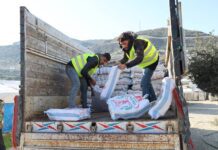
Over 2.5 million Syrians have returned to their communities since late 2024, according to the United Nations’ refugee agency. The figure includes 850,000 people who came back from abroad and 1.7 million internally displaced persons.
Deputy High Commissioner for Refugees Kelly Clements said most of the returnees had experienced multiple displacements over the past 14 years, complicating their efforts to resettle. “This is a vital time and a great opportunity to explore potential solutions to the largest global displacement we have seen in the past 14 years,” Clements said in remarks from Syria September 1. She noted that while some families feel conditions are right to return, others are waiting to see how the situation develops before moving back.
Basic Needs and Legal Hurdles
Clements stressed that returnees continue to face hardships, they require safe housing, health services, schools and legal documentation. Many lack the papers needed to reclaim homes or access services. During a visit to Maarat al-Numan in Idlib province, she joined Governor Muhammad Abdurahman in opening a new civil registry center. “Legal documents are the cornerstone for reclaiming their properties and reintegrating them into community life,” she said.
The UN has also supported the rehabilitation of primary clinics and other facilities, often in partnership with humanitarian agencies, to improve access to health care for returnees and host communities.
Funding Shortfalls Hamper Support
Despite progress, resources remain strained. Clements warned that current international funding meets only 22% of the UNHCR’s 2025 requirements. She said the agency cannot provide cash support and basic services without greater backing from donors.
An operational response has been launched to help returning families, including small-scale home repairs and cash support for vulnerable households across 69 community centers. However, Clements emphasized that the sustainability of these programs “depends on securing the necessary funding and continuing cooperation with the Syrian government.”
Regional Dynamics of Return
Neighboring countries report significant movements as well. Turkish Interior Minister Ali Yerlikaya said last month that more than 450,000 Syrians have returned voluntarily from Turkey since December 2024, bringing the total number of returnees from Turkey to more than 1.1 million.
Meanwhile, Clements confirmed that more than 200,000 refugees have left Lebanon for Syria this year, mostly to Hama, Homs and Aleppo provinces. The Japanese government also announced $5.5 million in support for a UN program to rehabilitate infrastructure in Aleppo and Homs, aimed at creating safer living conditions as more families return.
Challenges in Southern Syria
The crisis remains acute in areas hit by recent violence. Clements said about 190,000 people were displaced in southern Syria after fighting in Suwayda last July. Since then, 21 relief convoys have been sent, and the reopening of the Damascus-Suwayda highway has allowed aid to reach affected communities.
Clements reiterated that sustained international engagement is crucial. “Continued cooperation between the Syrian government and the international community is needed to meet the needs of returnees and provide sustainable solutions,” she said.








